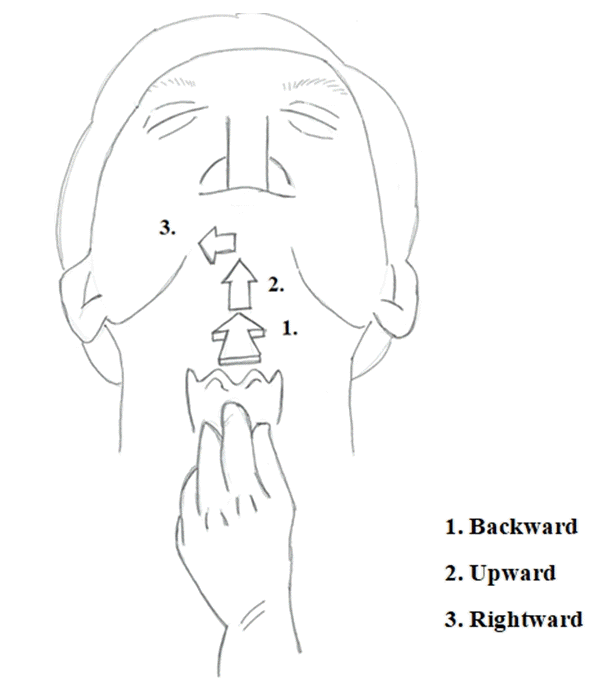1. Ko DD, Kang H, Yang SY, Shin HY, Baek CW, Jung YH, et al. A comparison of hemodynamic changes after endotracheal intubation by the Optiscope™ and the conventional laryngoscope. Korean J Anesthesiol. 2012; 63:130–5.
2. Nam K, Lee Y, Park HP, Chung J, Yoon HK, Kim TK. Cervical spine motion during tracheal intubation using an Optiscope versus the McGrath videolaryngoscope in patients with simulated cervical immobilization: a prospective randomized crossover study. Anesth Analg. 2019; 129:1666–72.
3. Yoon HK, Lee HC, Park JB, Oh H, Park HP. McGrath MAC videolaryngoscope versus Optiscope video stylet for tracheal intubation in patients with manual inline cervical stabilization: a randomized trial. Anesth Analg. 2020; 130:870–8.
4. Oh H, Kim H, Yoon HK, Lee HC, Park HP. No radiographic index predicts difficult intubation using the Optiscope™ in cervical spine surgery patients: a retrospective study. BMC Anesthesiol. 2020; 20:47.
5. Amir SH, Ali QE, Bansal S. A comparative evaluation of video stylet and flexible fibre-optic bronchoscope in the performance of intubation in adult patients. Indian J Anaesth. 2017; 61:321–5.
6. Park SK, Yun SH, Park JC, Kim HJ. Learning curve of skilled anesthesiologists for endotracheal intubation using Optiscope™. Anesth Pain Med. 2017; 12:271–4.
7. Knill RL. Difficult laryngoscopy made easy with a "BURP". Can J Anaesth. 1993; 40:279–82.
8. Takahata O, Kubota M, Mamiya K, Akama Y, Nozaka T, Matsumoto H, et al. The efficacy of the "BURP" maneuver during a difficult laryngoscopy. Anesth Analg. 1997; 84:419–21.
9. Yu T, Wu RR, Longhini F, Wang B, Wang MF, Yang FF, et al. The "BURP" maneuver improves the glottic view during laryngoscopy but remains a difficult procedure. J Int Med Res. 2020; 48:300060520925325.
10. Seo H, Kim E, Son JD, Ji S, Min SW, Park HP. A prospective randomised study of a rigid video-stylet vs. conventional lightwand intubation in cervical spine-immobilised patients. Anaesthesia. 2016; 71:1341–6.
11. Armstrong J, John J, Karsli C. A comparison between the GlideScope video laryngoscope and direct laryngoscope in paediatric patients with difficult airways - a pilot study. Anaesthesia. 2010; 65:353–7.
12. Al Ramadhani S, Mohamed LA, Rocke DA, Gouws E. Sternomental distance as the sole predictor of difficult laryngoscopy in obstetric anaesthesia. Br J Anaesth. 1996; 77:312–6.
13. Savva D. Prediction of difficult tracheal intubation. Br J Anaesth. 1994; 73:149–53.
14. Prakash S, Mullick P, Bhandari S, Kumar A, Gogia AR, Singh R. Sternomental distance and sternomental displacement as predictors of difficult laryngoscopy and intubation in adult patients. Saudi J Anaesth. 2017; 11:273–8.
15. Khan ZH, Mohammadi M, Rasouli MR, Farrokhnia F, Khan RH. The diagnostic value of the upper lip bite test combined with sternomental distance, thyromental distance, and interincisor distance for prediction of easy laryngoscopy and intubation: a prospective study. Anesth Analg. 2009; 109:822–4.
16. Motheral B, Brooks J, Clark MA, Crown WH, Davey P, Hutchins D, et al. A checklist for retrospective database studies--report of the ISPOR Task Force on Retrospective Databases. Value Health. 2003; 6:90–7.
17. Eichelsbacher C, Ilper H, Noppens R, Hinkelbein J, Loop T. [Rapid sequence induction and intubation in patients with risk of aspiration: recommendations for action for practical management of anesthesia]. Anaesthesist. 2018; 67:568–83. German.




 PDF
PDF Citation
Citation Print
Print




 XML Download
XML Download